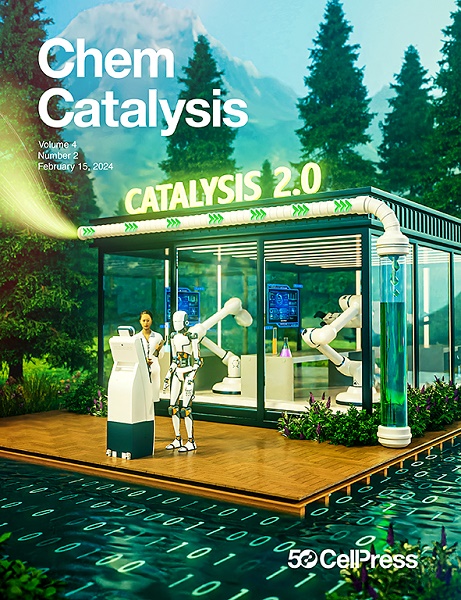平面外微结构工程可提高氢气产量
IF 11.5
Q1 CHEMISTRY, PHYSICAL
引用次数: 0
摘要
在本期《化学催化》(Chem Catalysis)杂志上,Xiong 等人介绍了利用气泡制备应变控制的 MoS2 单层,以实现电催化氢进化反应(HER)。诱导的微结构和固有的 S 空位影响了电子结构、激子动力学和氢吸附,从而产生了更大的气泡。衍生样品具有更好的酸性氢催化反应性能。本文章由计算机程序翻译,如有差异,请以英文原文为准。
Engineering out-of-plane microstructure enables higher hydrogen production
In this issue of Chem Catalysis, Xiong et al. describe the preparation of a strain-controlled MoS2 monolayer using bubbles toward the electrocatalytic hydrogen evolution reaction (HER). The induced microstructure and intrinsic S vacancies affected the electronic structure, exciton dynamics, and hydrogen adsorption, resulting in larger bubbles. The derived samples exhibited better acidic HER performance.
求助全文
通过发布文献求助,成功后即可免费获取论文全文。
去求助
来源期刊
CiteScore
10.50
自引率
6.40%
发文量
0
期刊介绍:
Chem Catalysis is a monthly journal that publishes innovative research on fundamental and applied catalysis, providing a platform for researchers across chemistry, chemical engineering, and related fields. It serves as a premier resource for scientists and engineers in academia and industry, covering heterogeneous, homogeneous, and biocatalysis. Emphasizing transformative methods and technologies, the journal aims to advance understanding, introduce novel catalysts, and connect fundamental insights to real-world applications for societal benefit.

 求助内容:
求助内容: 应助结果提醒方式:
应助结果提醒方式:


